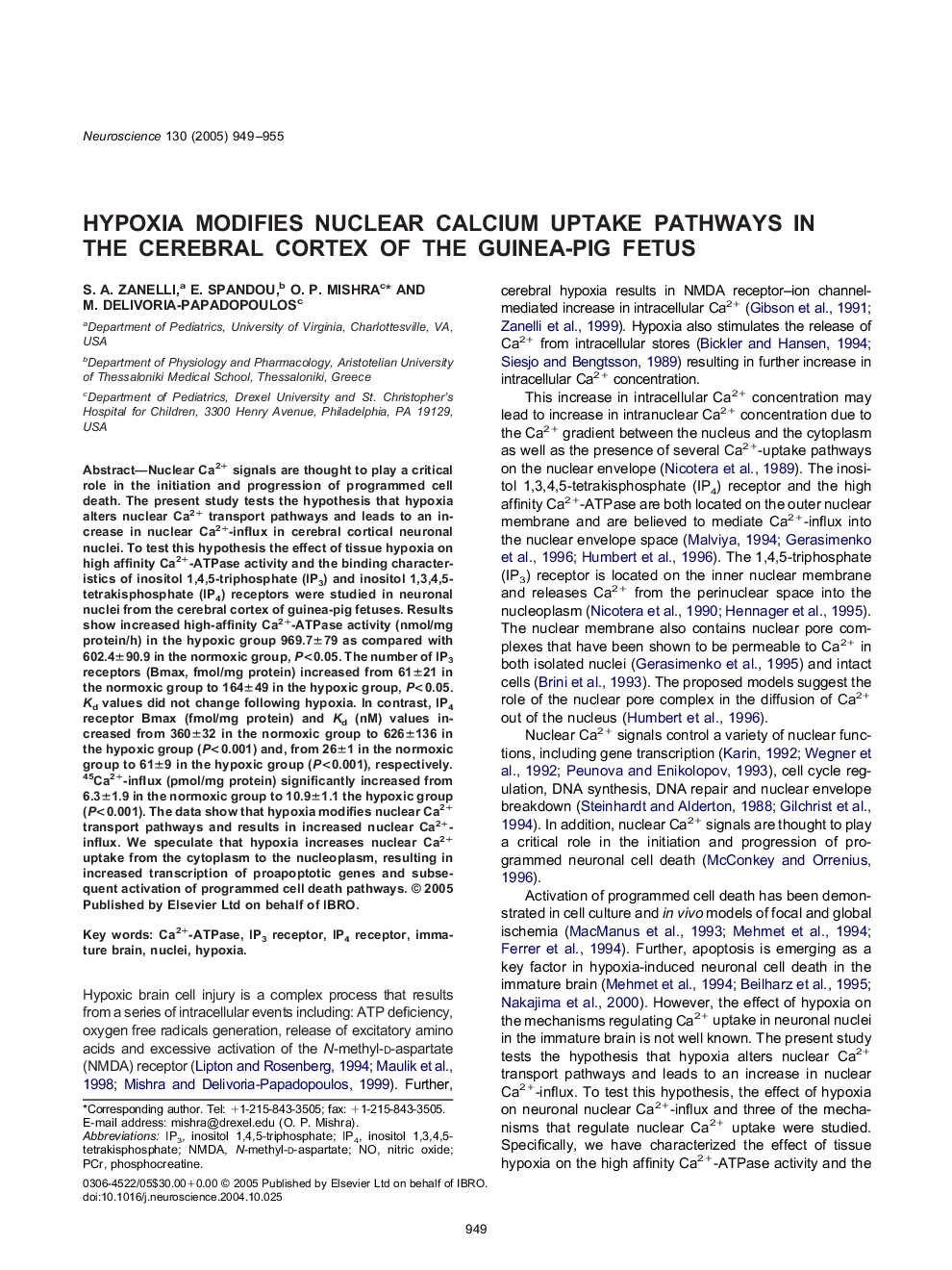| Article ID | Journal | Published Year | Pages | File Type |
|---|---|---|---|---|
| 9425705 | Neuroscience | 2005 | 7 Pages |
Abstract
Nuclear Ca2+ signals are thought to play a critical role in the initiation and progression of programmed cell death. The present study tests the hypothesis that hypoxia alters nuclear Ca2+ transport pathways and leads to an increase in nuclear Ca2+-influx in cerebral cortical neuronal nuclei. To test this hypothesis the effect of tissue hypoxia on high affinity Ca2+-ATPase activity and the binding characteristics of inositol 1,4,5-triphosphate (IP3) and inositol 1,3,4,5-tetrakisphosphate (IP4) receptors were studied in neuronal nuclei from the cerebral cortex of guinea-pig fetuses. Results show increased high-affinity Ca2+-ATPase activity (nmol/mg protein/h) in the hypoxic group 969.7±79 as compared with 602.4±90.9 in the normoxic group, P<0.05. The number of IP3 receptors (Bmax, fmol/mg protein) increased from 61±21 in the normoxic group to 164±49 in the hypoxic group, P<0.05. Kd values did not change following hypoxia. In contrast, IP4 receptor Bmax (fmol/mg protein) and Kd (nM) values increased from 360±32 in the normoxic group to 626±136 in the hypoxic group (P<0.001) and, from 26±1 in the normoxic group to 61±9 in the hypoxic group (P<0.001), respectively. 45Ca2+-influx (pmol/mg protein) significantly increased from 6.3±1.9 in the normoxic group to 10.9±1.1 the hypoxic group (P<0.001). The data show that hypoxia modifies nuclear Ca2+ transport pathways and results in increased nuclear Ca2+-influx. We speculate that hypoxia increases nuclear Ca2+ uptake from the cytoplasm to the nucleoplasm, resulting in increased transcription of proapoptotic genes and subsequent activation of programmed cell death pathways.
Keywords
Related Topics
Life Sciences
Neuroscience
Neuroscience (General)
Authors
S.A. Zanelli, E. Spandou, O.P. Mishra, M. Delivoria-Papadopoulos,
